Cauliflower can be a challenging vegetable to grow in the home garden. It has very specific needs, and when they aren’t met, your harvest basket may be full of green leaves, but no heads.
We link to vendors to help you find relevant products. If you buy from one of our links, we may earn a commission.
As a gardener few things are as frustrating as tending to cauliflower plants only to end up with lots of leaves but no heads. After patiently caring for seedlings transplanting, watering, and feeding your plants, it’s disappointing to harvest leafy greens but no curds.
Cauliflower can be temperamental to grow. While other crops may produce some sort of harvest despite imperfect conditions, cauliflower is unforgiving. Each plant only produces one head, so you only get one shot to get it right.
Luckily, with some knowledge of cauliflower’s fussy requirements, you can coax those plants into forming beautiful dense white heads. Here’s an in-depth look at why cauliflower fails to form heads, and most importantly, how to solve the problem.
Why Cauliflower Fails to Form Heads
There are several key reasons why cauliflower plants may not form heads, The most common causes include
-
Wrong variety – Choose a variety suited to your climate Cauliflower needs consistent cool temps around 60-70°F to form heads
-
Seedling stress – Cauliflower is sensitive when young. Proper hardening off is crucial when transplanting starts outdoors.
-
Insufficient sunlight – Cauliflower needs at least 6 hours of direct sun daily to produce heads.
-
Nutrient deficiencies – Cauliflower is a heavy feeder. Macronutrients like nitrogen and micronutrients like boron are essential.
-
Poor drainage – Wet soggy soil leads to root rot and disease. Cauliflower needs good drainage.
-
Lack of water – Letting plants dry out causes stress and poor head formation. Supply 1-2 inches of water per week.
-
Overcrowding – Proper spacing allows good air circulation. Overcrowded plants compete for resources.
-
Pests & diseases – Cabbage worms, aphids, downy mildew and more can damage plants.
-
Failure to rotate crops – Planting in the same spot depletes soil nutrients.
-
Temperature extremes – Heat causes bolting, cold causes damage. Maintain ideal temperatures.
-
Immaturity – Some heads just need more time to reach full size. Don’t give up too soon.
How to Get Beautiful Cauliflower Heads
Now that you know why cauliflower fails to form curds, here are solutions to correct the problems:
-
Choose the right variety – Select seeds suited to your USDA zone, with days to maturity that fit your growing season.
-
Prevent transplant shock – Start seeds indoors and properly harden off before transplanting outside.
-
Give ample sunlight – Site plants where they’ll get at least 6 hours of direct sun daily.
-
Test and amend soil – Add compost and fertilizer to provide optimal nutrition.
-
Ensure good drainage – Plant in well-draining soil. Avoid overwatering.
-
Space plants properly – Allow 24+ inches between plants and 30-36 inches between rows.
-
Use row covers – Floating row covers protect plants from pests and diseases.
-
Rotate plant families – Change location yearly to replenish nutrients.
-
Regulate temperatures – Use floating row covers and mulch to maintain ideal temperatures.
-
Have patience! – Wait the full days to maturity before giving up on heads forming.
Paying close attention to cauliflower’s preferences takes the guess work out of getting a good harvest. While still somewhat persnickety, understanding what cauliflower plants need to thrive makes successful head formation much more likely.
When given the proper care, your cauliflower plants will reward you with dense, heavy pure white heads just waiting to be enjoyed. Don’t let past failures deter you from trying again. With the right approach, soon you’ll be harvesting cauliflower heads as bountiful as those found in the produce aisle.
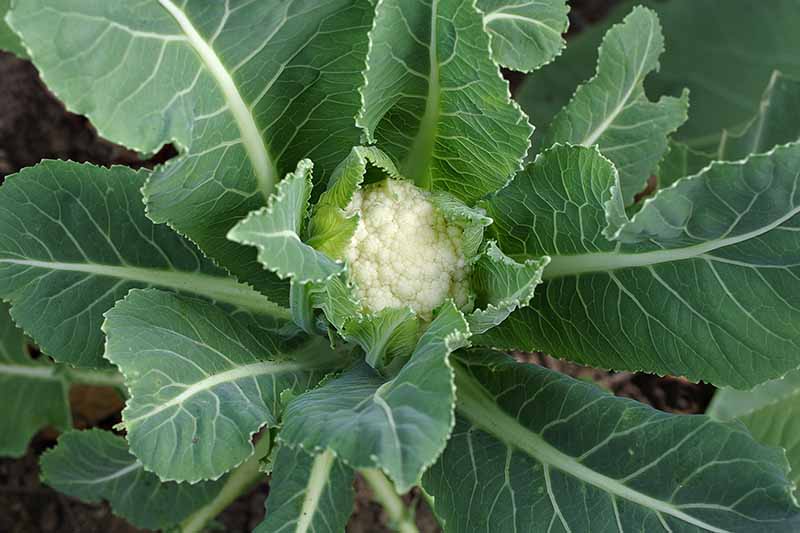
Why Isn’t My Cauliflower Forming Heads?
Sometimes a crop is doomed from the start. This is likely to be the case when you purchase seed that is not suited to your USDA Hardiness Zone. Cauliflower thrives best with consistent temperatures ranging from 60 to 70°F.
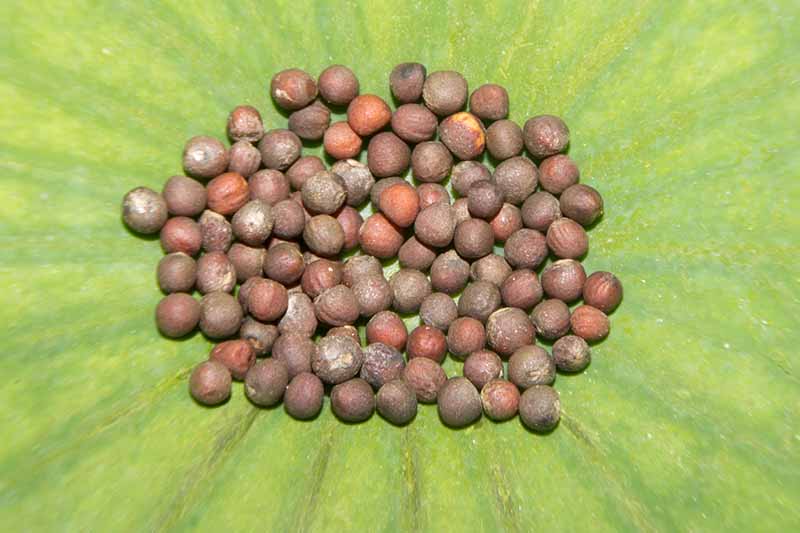
Be sure to read seed packets carefully and choose varieties with days to maturity that match your climate’s growing season. Decide if you’ll plant a spring or fall crop, or both. Explore the latest cultivars that have improved temperature tolerance and shortened maturation periods.
Cauliflower is temperamental throughout its development, especially during the germination and seedling phase.
For best results, start seeds indoors about four to six weeks before the last predicted frost date in spring. This is preferable to direct sowing, because it gives seedlings a chance to become established before facing outdoor conditions.
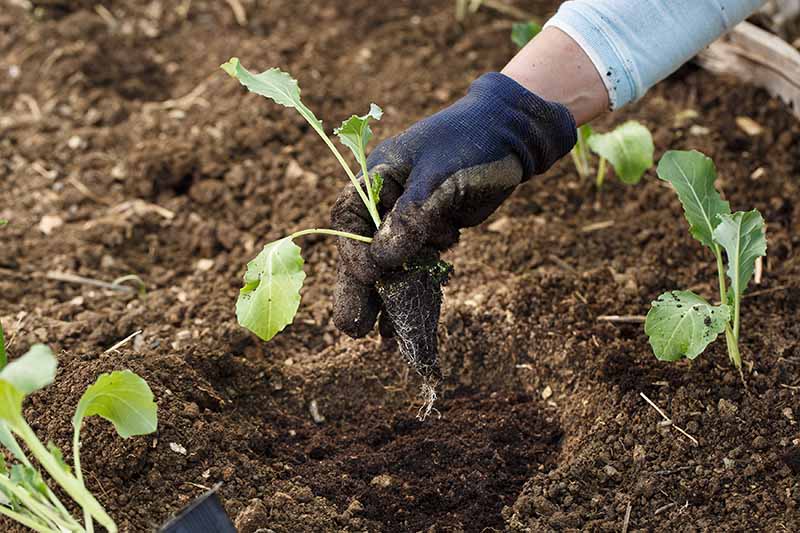
Transplant seedlings about two weeks prior to the last average frost date in your area, when they have grown at least two sets of true leaves. The ground should be at least 50°F.
Don’t wait too long to transplant, or your seedlings may become pot-bound, with roots that wrap around and around fail to deliver water and essential nutrients to the developing plant
If your climate allows for a fall crop, wait until the average air temperature has dropped to at least 75°F, generally about eight weeks before the first frost.
Seedlings require a period of gradual acclimation to the outdoors called “hardening off.” Without it, cold shock may slow growth and have a detrimental effect on development.
Poorly tended seedlings may appear to thrive, but if they have suffered stress they might not form heads as expected.
Lack of Sun
Members of the Brassica genus like cauliflower, broccoli, cabbage, and kohlrabi require full sun to thrive. Without at least six hours of sunlight per day, results may be disappointing.
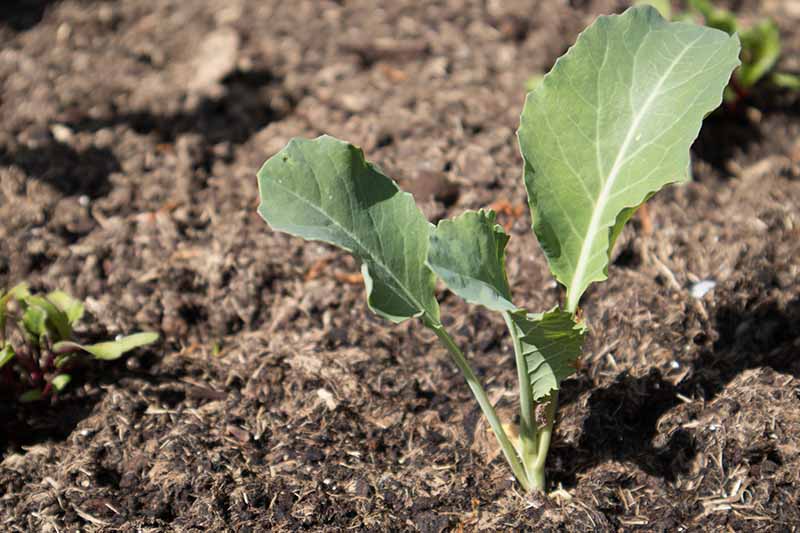
If your region has afternoons that are really too hot for cauliflower growing, you may try planting in partial shade. However, growth slows without sunlight, and you might find your plants are still putting on leaves when they should be forming heads.
Organically-rich soil is best for cauliflower. It’s a heavy feeder, so do a soil test and determine the nutrient content of your garden. Improve the soil as needed with the addition of compost, well-aged manure, or humus.
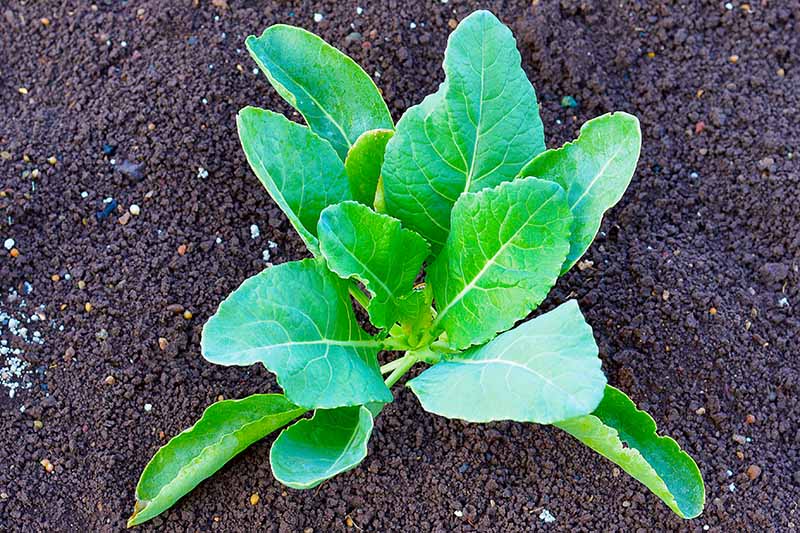
Soil contains macronutrients like nitrogen, phosphorous, and potassium, the N-P-K that you see on fertilizer labels. It also contains other macronutrients including calcium, and micronutrients such as copper. Micronutrients are typically found in lesser amounts.
Imbalances in the soil may result in inadequate nutrient uptake, resulting in stress that may cause failure to form heads.
One nutrient that’s difficult to measure is nitrogen. While cauliflower uses a good bit of it to grow, too much of this macronutrient is known to cause excess foliage production.
Therefore, if you fertilize your vegetables, you should choose a slow-release type in which the ratio of N is slightly less than the P and K components.
A soil test also determines pH, and serves as a measure of acidity or alkalinity. For cauliflower, the pH should be neutral to slightly acidic, or about 6.5 to 7.0. You may increase acidity with the addition of rich organic matter, or decrease it with an application of garden lime.
Poor soil that is devoid of nutritive organic matter, as well as soil with a pH that’s too acidic or too alkaline, may contribute to head formation failure.
While cauliflower requires consistent moisture, it should never stand in a puddle. Its roots need to take what they require to nourish the plant and let the rest drain away.
Poorly draining soil leaves roots vulnerable to nibbling nematodes, slugs, and snails that can impair the ability of the plant to take up water and nutrients. In addition, these insects may spread diseases to weakened plants.
If your cauliflower has consistently wet feet, it may fail to produce heads.
This veggie is one of the thirstier ones. It needs one to two inches of water each week, so get yourself a rain gauge to monitor rainfall, and prepare to supplement as needed.
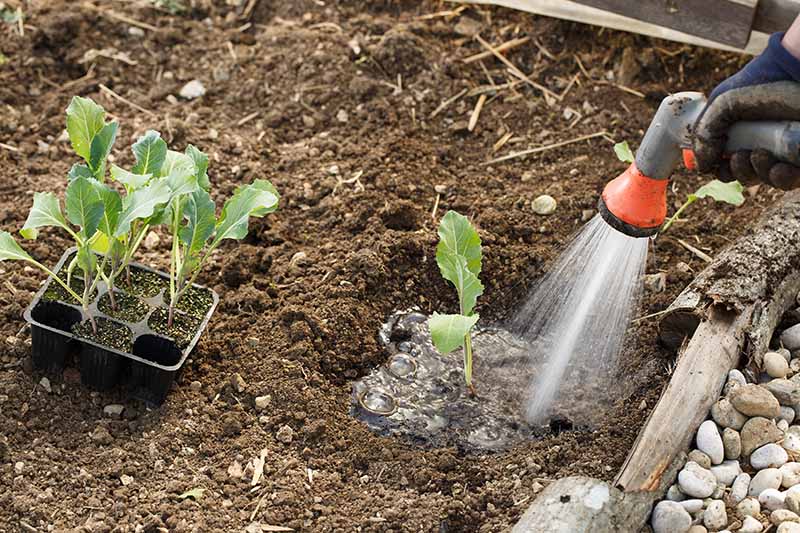
With some vegetables, you can get away with keeping them moist during the germination and seedling phases, and then let Mother Nature provide the rain they need.
But this is not so with cauliflower. If you let it dry out, it’s likely to suffer stress that can lead to bolting, buttoning, or no head formation.
Keep in mind that it’s not only a lack of sufficient rainfall and failure to irrigate with supplemental water as needed that may leave your crops at risk of drying out. Wind may accelerate moisture evaporation as well. So, if the weather forecast is a gusty one, protect plants with well-anchored floating row covers.
When transplanting seedlings, space them out with 24 inches between plants, and 30 to 36 inches between rows. This allows for ample airflow and root formation, essentials for healthy growth.
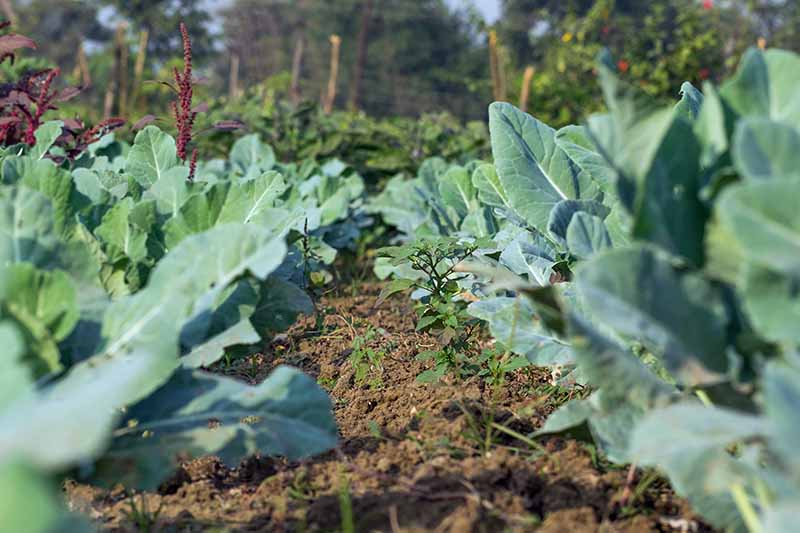
Circulating air stays cooler and less humid, helping to inhibit fungal diseases that are detrimental to cole crop development.
Roots that can spread without competition from neighbors are better able to hydrate and nourish a plant.
How to Get Broccoli and Cauliflower to Form Big Beautiful Heads: Shade Cloth & Mulch – Cool Soil!
FAQ
Why is my cauliflower growing but no head?
Blind bud is a condition where no central growing point forms and no head develops on a cauliflower plant. This condition is usually associated with periods of extremely warm weather, with day-time air temperatures over 86°F and night-time air temperatures over 77°F.
How do you get cauliflower to form heads?
Cauliflower needs low temps to set a head, so in warm-winter climates you often get Jurassic leaves but no head. Warm-winter climates should grow cauliflower in the fall instead of spring. That may increase your chances if you haven’t tried that already.
Can you eat cauliflower leaves that don’t form a head?
Broccoli and cauliflower leaves are great eating. The stems are tender and delicious when peeled and cooked, and the leafy bits can be chopped up and used in salads, slaws, soups, pies… whatever you like. So if you’re getting hungry waiting for your broccoli and cauliflower heads to form, tuck into the leaves!
Why is my cauliflower not flowering?
Temperature: Cauliflower prefers a temperature range of 60-75°F (15-24°C) during the growing season. Temperatures that are too high or too low can inhibit head formation and lead to small, underdeveloped heads. Soil Fertility: Cauliflower is a heavy feeder and requires nutrient-rich soil to support its growth.
Why is my cauliflower not forming a head?
Sometimes what seems like a plant’s failure to form a head is actually due to a misunderstanding of the number of days to maturity. Depending on the variety, cauliflower needs between 50 and 100 growing days to be harvest-ready. While this information is provided on seed packets, it’s easy to forget.
Why is my cauliflower not growing?
Imbalances in the soil may result in inadequate nutrient uptake, resulting in stress that may cause failure to form heads. One nutrient that’s difficult to measure is nitrogen. While cauliflower uses a good bit of it to grow, too much of this macronutrient is known to cause excess foliage production.
Do cauliflower plants have a single head?
Unlike broccoli, cauliflower plants produce only a single head with few if any side shoots. The best heads will have buds so tightly packed it’s difficult to see them individually, and will be firm and heavy with no brown discolouration. Cauliflower head blindness is a problem that can occur when plants do not develop any buds at all.
Is cauliflower hard to grow?
Cauliflower is a cool-season crop that’s not only delicious but also versatile and nutritious. This cruciferous vegetable is a favorite ingredient among gardeners and cooks alike. Growing cauliflower is rewarding, but it can also sometimes be a challenging experience. The most common problem gardeners encounter is poor (or no) head formation.
How do you know if a cauliflower plant is good?
Unlike broccoli, cauliflower plants produce only a single head with few if any side shoots. The best heads will have buds that are so close together that it’s hard to see each one. They will also be firm and heavy, and there won’t be any brown spots on them. First, find your climate zone using the map or descriptions below.
Is cauliflower a headless cauliflower?
Cauliflower has two phases of growth– vegetative and reproductive. The reproductive phase means head or curd growth and any number of conditions during the reproductive phase such as unusually hot weather, drought, or low temps can result in small premature heads or “buttons.” Some people think of this as a headless cauliflower.
